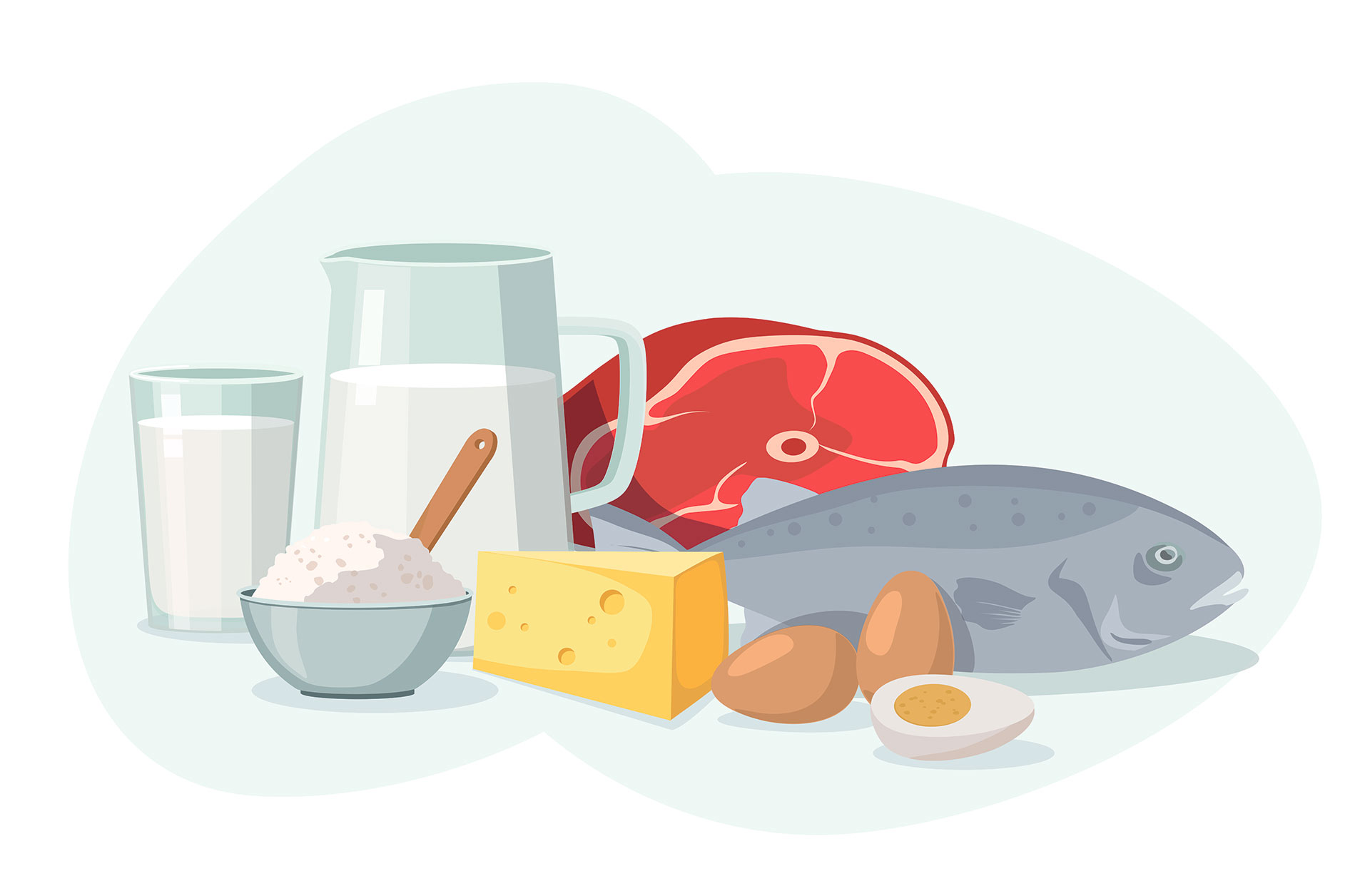Understanding Urea Cycle Disorders
What are Urea Cycle Disorders?
Urea cycle disorders (UCDs) are rare inherited diseases that do not allow the body to remove waste properly when breaking down protein. Protein is necessary to maintain proper health and bodily functioning. Protein is found in a variety of foods such as meat, fish, dairy products, nuts, and even grain.
When protein is eaten, the body is supposed to break down the protein into different amino acids. Amino acids are the building blocks of protein, and these amino acids are used throughout the body to maintain health. Amino acids that are not needed are further broken down into waste products that are then removed from the body. This process is called the urea cycle and happens in the liver.
For a person with a Urea Cycle Disorder, there is a malfunction in the urea cycle process. The liver is supposed to make enzymes that turn waste products in the body into urea. But if there is a deficiency in or absence of one of these enzymes, the liver cannot break the waste down into urea. The waste product will create ammonia and the ammonia will build up in the blood and become toxic. High levels of ammonia in the blood can cause serious problems like brain damage, coma, and, in severe cases, even death, if not treated.

Urea cycle disorders are genetic disorders that are passed down from parents to children.
UCDs are rare diseases that affect about 1 in 35,000 newborns. In the United States, about 3.6 million births occurred in 2020. This means that about 100 babies are born with an UCD each year.
Each parent passes along a copy of their genes to their child. With most UCDs, the child will get a defective copy of a gene that breaks down protein from both parents.
There are 8 different types of Urea Cycle Disorders depending on what defective gene the child receives from the parents. The severity of symptoms and complications from the disorder also depends on the type of disorder a person has.
Common Symptoms and Complications of Urea Cycle Disorders.
For the most severe UCDs, symptoms typically appear shortly after birth, and the baby can show these symptoms:
- Fussiness
- Sleepy or sluggish
- Won’t feed
- Vomiting
- Low body temperature
- Posture problems
- Seizures
- Fast breathing that becomes slow
- Coma
For less severe UCDs, symptoms may not appear for months or even years after birth, and the symptoms can include:
- Avoiding high protein foods or disliking meat
- Appetite loss
- Nausea or vomiting
- Behavioral problems such as hyperactivity
- Mental problems such as confusion, delusions, hallucinations, and psychosis
Important Safety Information
What is Pheburane®Important Safety Information
What is Pheburane®Important Safety Information
What is Pheburane®?
- Pheburane® is a prescription medicine, used along with a specific diet, for the long-term management of adults and children with urea cycle disorders (UCDs), involving deficiencies of carbamylphosphate synthetase (CPS), ornithine transcarbamylase (OTC) or argininosuccinate synthetase (AS).
- Episodes of sudden, rapid increase of ammonia in the blood (acute hyperammonemia) may happen in people during treatment with Pheburane®. Pheburane® is not used for the treatment of acute hyperammonemia, which can be life-threatening and requires emergency medical treatment.
Beforetaking Pheburane®, tell your healthcare provider about all of your medical conditions, including if you:
- have heart problems.
- have kidney or liver problems.
- have diabetes (Pheburane® contains sucrose), or have a history of fructose intolerance, glucose-galactose malabsorption, or sucrose-isomaltase insufficiency.
- are pregnant or plan to become pregnant. It is not known if Pheburane® will harm your unborn baby.
- are breastfeeding or plan to breastfeed. It is not known if Pheburane® passes into your breastmilk. Talk to your healthcare provider about the best way to feed your baby during treatment with Pheburane®.
Tell your healthcare provider about all the medicines you or your child take, including prescription and over-the-counter medicines, vitamins, and herbal supplements.
Certain medicines may increase the level of ammonia in your blood or cause serious side effects when taken during treatment with Pheburane®. Especially tell your healthcare provider if you or your child take:
- corticosteroids
- valproic acid
- haloperidol
- probenecid
Know the medicines you take. Keep a list of them to show your or your child’s healthcare provider and pharmacist when you get a new medicine.
What are the possible side effects of Pheburane®?
Pheburane® can cause serious side effects, including: Nervous system problems (neurotoxicity).
Call your healthcare provider right away if you get any of the following symptoms during treatment with Pheburane®:
- sleepiness
- tiredness
- lightheadedness
- vomiting
- nausea
- headache
- confusion
Low potassium levels in your blood (hypokalemia). Your healthcare provider will monitor your blood potassium levels during treatment with PHEBURANE and treat if needed.
Conditions related to swelling (edema).Pheburane® contains salt (sodium), which can cause swelling from salt and water retention. Your healthcare provider will decide if PHEBURANE is right for you if you have certain medical conditions that can cause swelling, such as heart failure, liver problems or kidney problems.
The most common side effects of Pheburane® include:
- absent or irregular menstrual periods
- decreased appetite
- body odor
- bad taste or avoiding foods that you ate prior to getting sick (taste aversion)
Your healthcare provider may do certain blood tests to check you or your child for side effects during treatment with Pheburane®.
These are not all the possible side effects of Pheburane®.
Call your doctor for medical advice about side effects.
You are encouraged to report negative side effects of prescription drugs to the FDA. Visit www.fda.gov/medwatch. or call 1-800-FDA-1088.
Please read the Full Prescribing Information, the Patient Information. and the Instruction for Use. before taking Pheburane® oral pellets and each time you get a refill.
